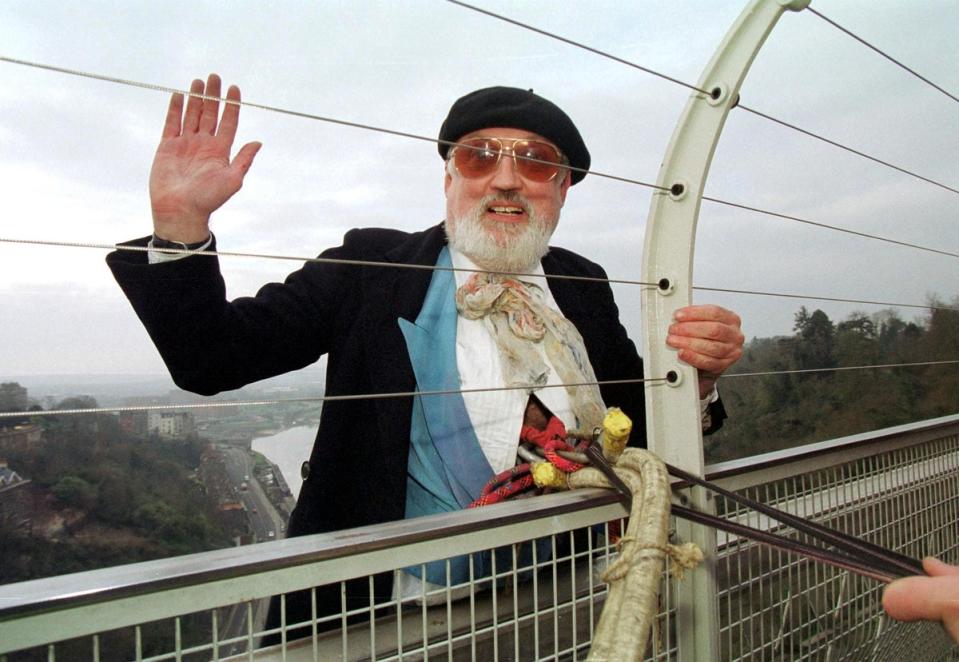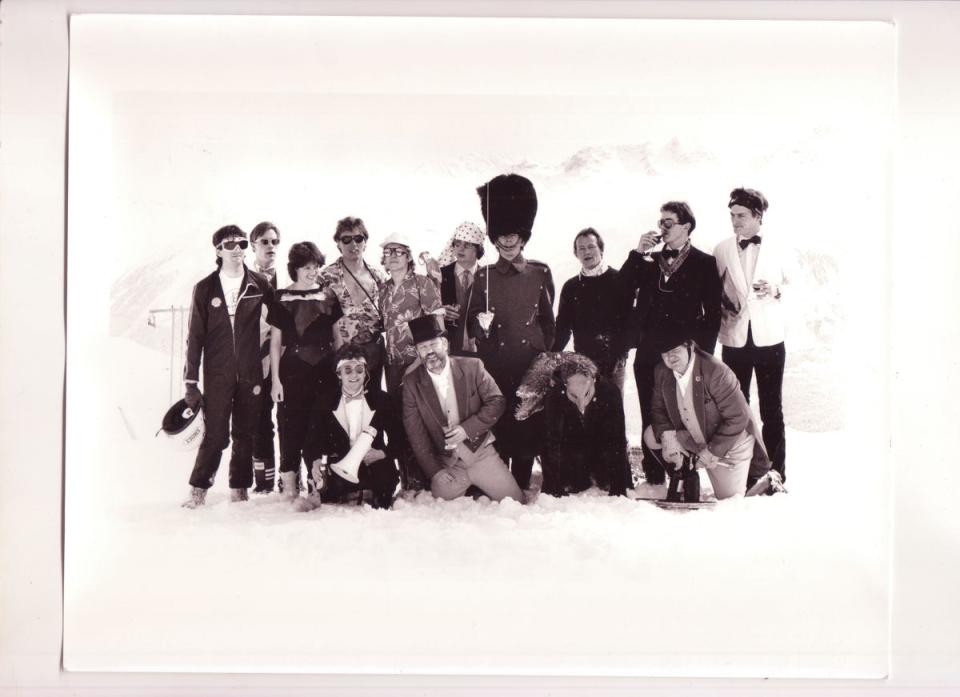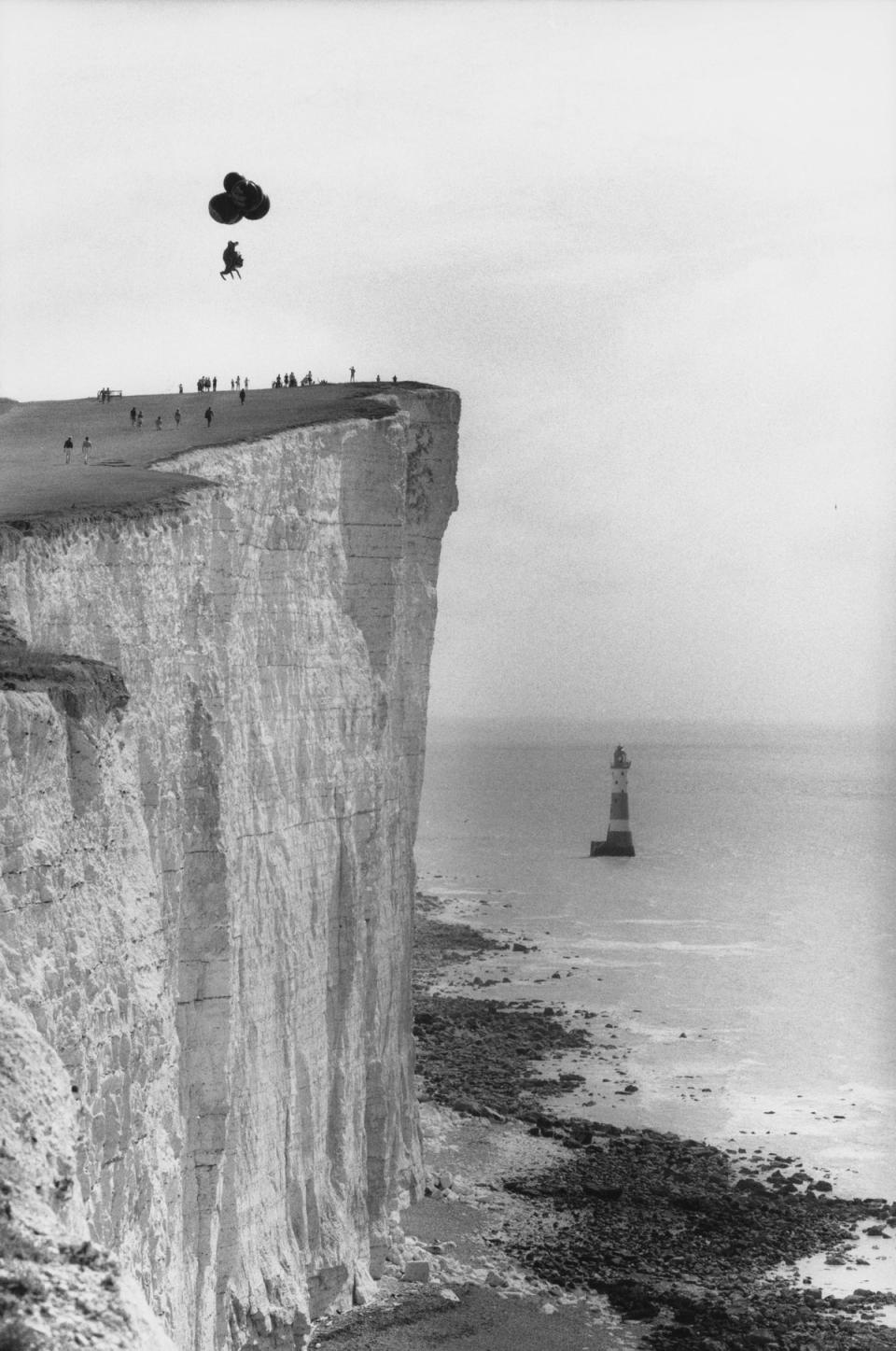David Kirke, pioneer of bungee jumping and Dangerous Sports Club, dies quietly in his bed aged 78
The maverick godfather of bungee jumping, who took the world’s first leap clutching a bottle of champagne and without testing the rope, has died peacefully in his bed.
Born in 1945 as the eldest of seven children, David Kirke birthed the worldwide phenomenon some 34 years later on April Fool’s Day, when – dressed in a top hat and fresh from all-night party – he and his friends decided to bungee jump from Bristol’s Clifton Suspension Bridge.
Describing Kirke as an “anarchic buccaneer” who was “Byronesque in thrall of living life to the full”, a friend of the family told The Independent that the septuagenarian “would have been shocked that he died quietly in his own bed”.
But while undoubtedly his most influential exploit, bungee jumping was but one extraordinary stunt pioneered by Kirke and his friends in the name of good fun.

Against the bleak backdrop of 1970s Britain, Kirke and several friends co-founded the Dangerous Sports Club – a group largely based in Oxford and London that gained notable attention in the ensuing decade for their daredevil activities, often donning top hats and coattails, and swigging champagne.
The idea for their bungee jump had been inspired by a rite of passage on the island of Vanuatu known as “land diving”, which saw young men leap from high towers and use vines to break their fall before landing on the ground.
While a demonstration of land diving for the late Queen during her visit to the Pacific island in 1974 went fatally wrong, that same year Kirke and his friends decided to attempt a similar feat, instead using elastic ropes used to help fighter jets land on aircraft carriers.
“We hadn’t tested it, or anything like that,” Kirke told the Bristol Post in 2019. “We were called the Dangerous Sports Club, and testing it first wouldn't have been particularly dangerous.

“I was confident though. We had some very clever guys with us – Alan Weston went on to be head of development at Nasa – and they told me it was going to be okay, they had worked out the false extension curves of these ropes.”
Being the first of his friends to jump that morning, while police officers staking out the bridge on the advice of concerned friends and family members had briefly “wandered off”, Kirke later recalled to ITV: “When the other guys came down, I thought, ‘whoopee, nobody’s dead’.
“It was a sort of fairly casual easy-going recklessness. American novelists would call it the insouciance of youth, but there it was.”
While police arrested the group and took them to the cells, Kirke recalled that the “bemused” officers had “brought us in the half-drunken bottles of wine we’d left at the bridge, and we were fined or something”.
Soon afterwards, the Dangerous Sports Club carried out bungee jumps from the Golden Gate Bridge in San Francisco, and performed a televised jump from the Royal Gorge Suspension Bridge in Colorado.

Never lacking in imagination, Kirke and the growing membership of the Dangerous Sports Club would go on to perform a host of mind-bending stunts in locations across the world.
These would include Kirke sliding down the slopes of Saint-Moritz on a grand piano and an aborted bid to fly a car across Tower Bridge’s open drawbridge.
“The DSC began when I went with a [fellow Oxford graduate] chum, called Ed Hulton, to Switzerland to watch the Cresta Run and the bobsleigh,” Kirke told The Independent in 1998.


“We’d previously built a hang-glider from a 1903 design, which had crashed and smashed to pieces so we wanted to try the Cresta and the bobsleigh. We found they were a bit exaggerated so we thought we’d start something new.”
Members of the group catapulted themselves off cliffs, jumped off Cheddar Gorge, and hang-glided into 5,000ft of cloud over Mount Kilimanjaro.
“It was all just a giggle. We were the first people to ever fly off Mount Olympus on a hang glider,” said Kirke, whose father was a schoolmaster and mother was a concert pianist.
“It was amazing. We were standing at the top of the home of the Gods and as I flew down I asked myself, ‘Is this better than sex?’ It possibly is but may not be quite as good as the best passage in a Joseph Conrad novel’.”
While the club’s membership peaked in the 1980s, Kirke and his friends continued to push boundaries. In 1986, he was sponsored by Foster’s lager to fly across the Channel tied to a kangaroo-shaped cluster of helium balloons – leading to him being prosecuted for flying without a pilot’s licence.

In a more tragic turn of events, two of Kirke’s friends were charged with manslaughter and later acquitted over the death of 19-year-old Oxford biochemistry student Kostadin Yankov, who died in 2002 after volunteering to be launched from a trebuchet and missing the safety net.
While not personally involved in the case, Kirke told Vanity Fair in February 2004 that it was “an extraordinary test case, about the right to experiment, at personal risk, versus social responsibility”.
Himself a student of psychology and philosophy, Kirke told the magazine: “We’re interested in new things. You make a fool of yourself, your girlfriend leaves you, you lose money, but you may have advanced things a tiny little half-inch. It’s a vocation, strangely enough, not that different from a Catholic priest.”
On Sunday, a friend of the family told The Independent: “David upturned apple carts, always. He wanted to do things that diverted and disrupted and stretched imagination. He dared and he sometimes dare-devilled and paid the price.
“What was non-negotiable was loyalty to his friends, and an unmovable desire to make art and literature pivotal to adventure and life.
“He was an anarchic buccaneer who left the world suddenly but he bequeathed a high bar for stretching imagination and adventure; he was Byronesque in thrall to living life to the full. He would have been shocked that he died quietly in his own bed.”

 Yahoo News
Yahoo News 
